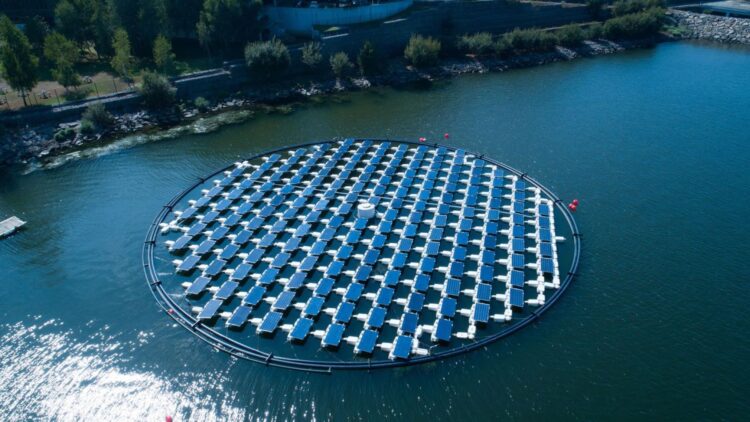In the search for cheaper and lasting solutions to the soaring energy demands, one American state wants to revolutionize how it will tap solar power through the rivers and reservoirs. This new generation of floating solar aims to turn large water bodies into power plants of solar energy that harness light from space to power the electricity network.
As a result of this, this approach of tapping into renewable energy sources as a strategy for fighting climate change is a clear indication of a bold step in the right direction towards exploring the possibilities of achieving the much-needed community energy in the face of numerous pledges, including the promise of saving cost and the environment.
Floating solar farms: Revolutionizing how rivers harness energy
Solar farms on water bodies are the newest addition to renewable energy production techniques or the next big thing in renewable energy, and one state seems to be on top of it. For instance, this concept of covering reservoirs with solar panels is quite an example of how innovative ideas can best meet contemporary issues.
Conventional solar farms require a large amount of land to be occupied, but using water bodies as platforms to place the panels is not an issue. Such opportunities are needed for reservoirs, which are used very sparingly to begin with. In addition to power generation, such panels minimize the evaporation of water – an essential factor in regions experiencing a water shortage.
One good example of this is the floating solar project of the Sweetwater Authority. The 3.7-MWac system is installed across the 9.5-acre campus and will generate 9.21 GWh of electricity annually, or approximately two-thirds of the authority’s electricity requirement. This innovation saves $500,000 per year on energy bills and decreases carbon footprint to more than 52,000 metric tons within the equipment’s useful life.
Moreover, the projects contribute to local participation in the development of the communities. Through public meetings and advisory groups, the communities are more involved in creating their energy future, making the floating solar farms a collective success.
Environmental and financial benefits: A win-win for communities
The floating solar systems offer unique environmental and economic benefits that are pretty outstanding. They are a force of change from climate change management to financial sustainability.
The main environmental advantage of using renewable energy technologies is the emission of greenhouse gases. Sweetwater’s project will avoid emissions as much as will be achieved by taking 11,000 cars off the road every year. This vital contribution fits into larger objectives such as attaining zero net carbon emissions and the fight against climate change.
From an economic perspective, floating solar eases the pressure on stretched energy budgets. As you can see from Sweetwater’s example, such systems help to level out rates when electricity costs rise. The estimated cost savings of up to $28 million over the project’s life also provide financial stability by releasing funds for other important services.
They also enhance water resource management, as evident from the above-stated projects. They save water by hampering their evaporation, mainly for irrigation and human consumption. This double use supports the idea that floating solar technology is very efficient.
Last, such ventures reassure people, particularly investors, about renewable energy business and investment in general and give the green light to developing new projects and joint ventures in different industries.
The future of solar energy: Floating technology beyond the state
While one state experiments with floating solar, the ramifications are vast. Can this technology change the existing global energy systems? The feature of floating solar systems makes them a solution to the world since they can be scaled up.
This is particularly true since countries like Japan and the Netherlands already have small tracts of land on which they have instituted floating solar farms. These projects can be run in different climates, as their success demonstrates.
The U.S. can extend this technology across the country. Those states with large reservoirs and bright sunshine, such as California and Arizona, will benefit greatly. Ideally, apart from power generation, the projects could revolutionize the use of renewable energy in agriculture and urban water supply systems.
There is a need for synergy between private organizations and governmental organizations. The support of public money and private knowledge can help to advance project development and promote quicker use of this revolutionary technology.
This floating technology in the renewable energy sector is a giant leap for mankind. Thus, when one American state covers reservoirs and uses solar power, it can claim to meet energy needs and promote environmentalism simultaneously.
This worldwide scaling concept may alter our energy and water efficiency approach and, most importantly, climate change. They may soon become the cornerstone of energy infrastructure worldwide thanks to the efficiency and sustainability of floating solar.

